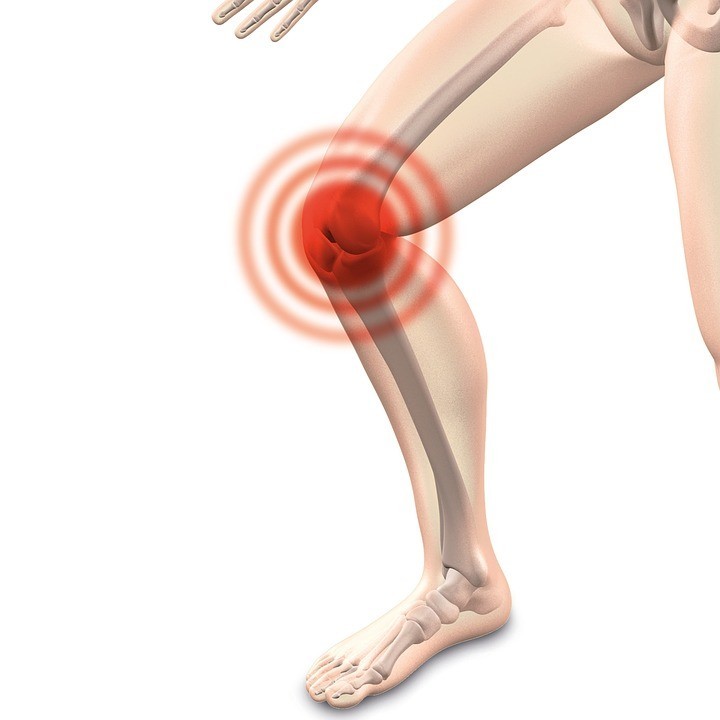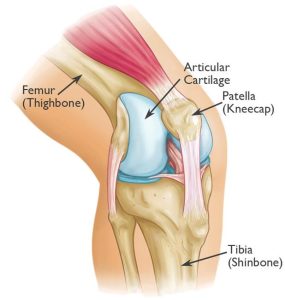Do you get pain whilst you’re running, doing squats or walking up stairs? Is this pain located just behind your kneecap?
If this sounds familiar, you may be experiencing Patellofemoral Pain Syndrome.
 How it Feels
How it Feels
Anterior knee pain or more accurately, Patellofemoral Pain Syndrome, commonly presents with pain on the front of the knee or behind the kneecap (patella).
Indications that you may be experiencing patellofemoral pain can include pain provoked behind the patella when:
- sitting
- squatting
- running
- using stairs
- jumping
- operating car pedals
This particular syndrome can affect across different ages and activity levels. However, it is more commonly seen in young adults who do running or high intensity sports, and people with flat feet. That being said, if you have three flights of stairs in your apartment block and no elevator, you are possibly more prone to this kind of overuse injury too.
How it Happens
Patellofemoral pain is strongly related to the biomechanics of the leg. This means your leg’s muscles, bones, ligaments and fascia, interrelate and function as a team to create movement. How this causes patellofemoral pain is unfortunately a case of what came first, the chicken or the egg.
A consistent overuse movement pattern, or a sudden knee cap jolt, can deviate the knee cap from its normal movement. This will cause continued alteration to how your surrounding muscles move the knee OR weakness/tightness of different surrounding muscles can alter the knee cap’s normal movement.
Anatomy

The patella sits within the quadriceps tendon (front thigh muscle) at the end of your femur. The femur has a groove which the shape of the patella lines up with; this allows the patella to track up and down the groove as the knee bends and straightens.
Why do we need this to happen? The patella creates a longer lever arm for your knee, making bending and straightening the knee significantly less effort (approx 30%) on your quadriceps. To be effective, the patella must track perfectly up and down the groove of the knee. If it deviates from its normal movement this will cause it to rub uncomfortably across the femur.
Many different structures directly and indirectly influence how your patella moves in the groove of the femur. These include your: quadriceps, ITB (iliotibial band), hip flexors, hamstring, glutes (butt muscles), adductors (inner thigh), hip-to-knee angle and foot posture.
Outcomes
Patellofemoral Pain Syndrome can become chronic and lead to relapses or further conditions if the biomechanical dysfunctions are not addressed.
Treatment
Treatment for Patellofemoral Pain Syndrome mainly involves decreasing any inflammation, and temporarily reducing/modifying aggravating activities. More importantly, treatment involves identifying then addressing any biomechanical dysfunction in the lower limb.
Ice, sports taping and soft tissue release can help to relieve acute pain. However, long term improvement will come through functional strengthening exercises and movement re-education. Your Physiotherapist will be able to assess any muscle weakness as well as sub-optimal movement. Therefore, a targeted and appropriate approach can be developed for your specific sports and lifestyle requirements.
When patellofemoral pain is initially provoked, one should rest from aggravating activities, ice the knee and do gentle pain-free movement. This is an excellent way to begin improving your pain levels prior to being seen by your Physiotherapist.
—
The knee is a complex joint with many other possible injuries and predisposed risks. Therefore, it is important to seek Physiotherapist or medical advice to rule out other potentially more severe conditions.
—
You can BOOK ONLINE with one of our expert physiotherapists. Otherwise, you can call us on (02) 9267 3775 or take a minute to fill out our contact form and we’ll get in touch with you 🙂 .

